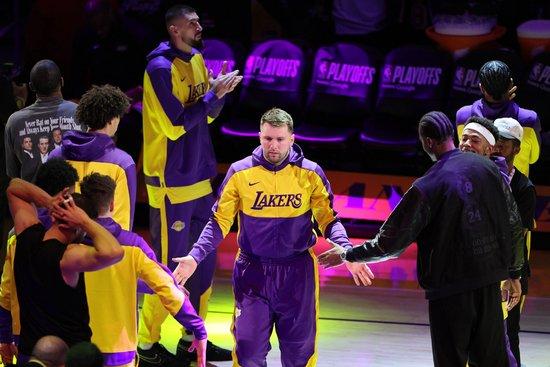
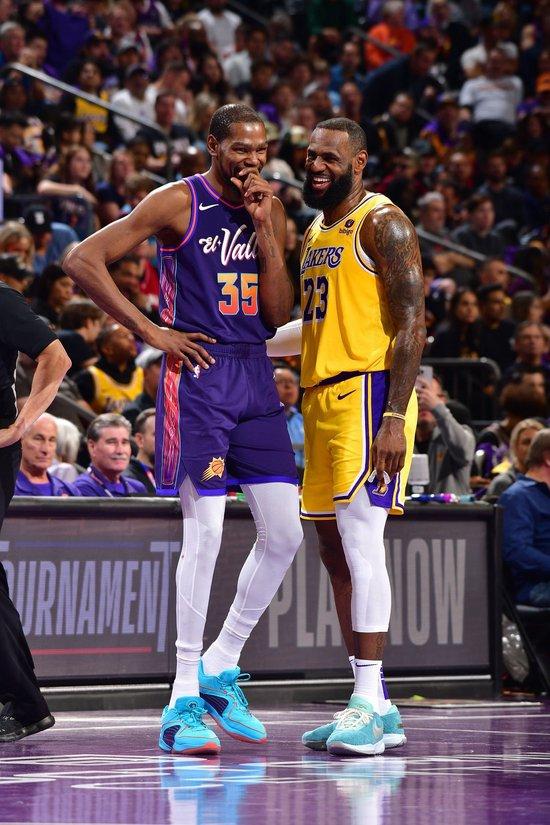
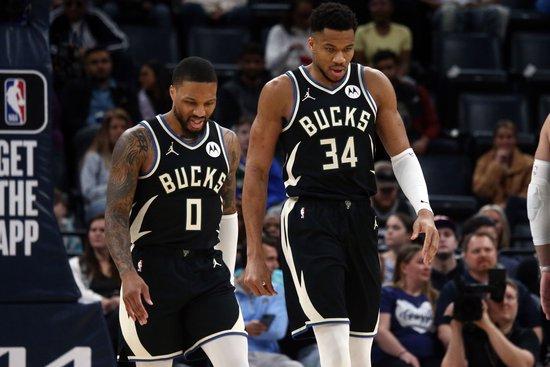
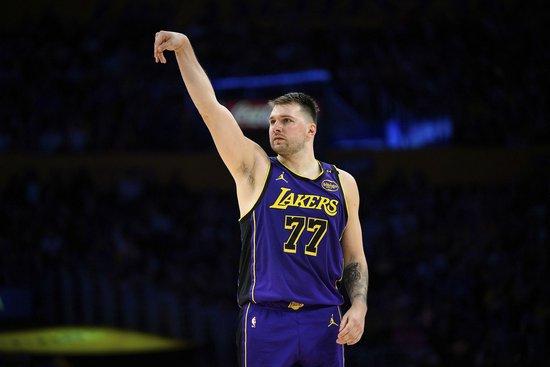
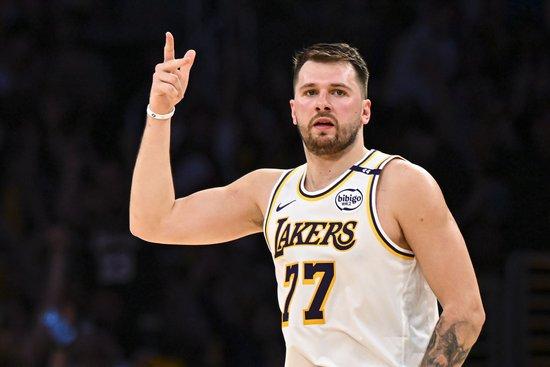
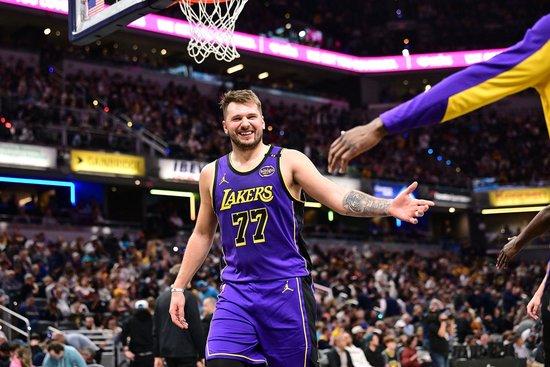
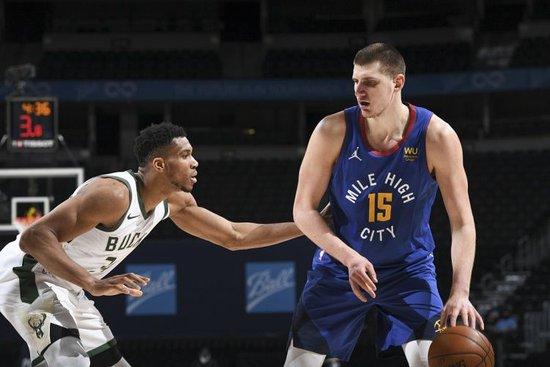
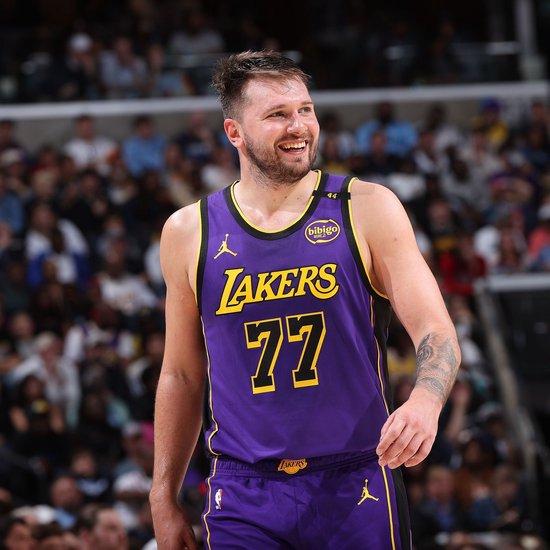

Translator’s Note: The original text was published by CBS Sports, with all data up to the time of publication (August 1, local time). The dates mentioned have been converted to Beijing time. The views expressed in the article are not related to the translator or the platform.
Luca Dončić may have only been with the Lakers for a few months, but from all aspects, he is ready to commit to a more long-term commitment. On August 3, the early extension restriction for Dončić will expire. By then, he is expected to sign an early extension contract to stay in Los Angeles.
The question here is, what is the duration of the new contract? When Dončić was playing for the Mavericks, he was expected to renew his contract with a super max deal, which would extend five years beyond his current contract. However, he is no longer eligible for a super max because the Lakers did not draft him or acquire him during his first four years of his career.
This limits the potential income he could receive in the first year of the new contract to 30% of the salary cap, rather than the 35% he could have had with the Mavericks. This also reduces the contract’s duration by at least one year. Dončić can only extend his current contract for four more years.
Does he want to add all four years? That’s the answer we’re waiting to find out. Dončić has three viable contract options this offseason: a one-year, two-year, or three-year contract with additional player options. Each option offers unique advantages. So, let’s analyze each one and try to determine what Dončić should sign with the Lakers in August.
In this case, Dončić will only commit to staying for one more year, that is, the 2026-27 season. Then, he will have a player option in the 2027-28 season.
Based on the current estimated salary cap increase of 7% and the maximum allowable annual salary increase of 8%, such a contract appears to be:
2025-26 Season (Current Contract):
$45,999,660
2026-27 Season (New Contract Starts):
$49,641,687
2027-28 Season (Player Option):
$53,613,021
$149,254,368
The most obvious attraction of this contract is its flexibility. Upon joining the Lakers just six months ago, Dončić has signed an early extension. This means a short-term commitment as well as giving the Lakers more time to build their team. However, if he were dissatisfied with any moves made by the team, it also provides him with an easy way out. Nonetheless, from all perspectives, Dončić has been an active participant in the roster construction process. Reports indicate that he recruited Marcus Smart. His agent, Bill D’Antoni, is also the agent for DeAndre Jordan, so if Dončić had any objections to playing with him, they are now unlikely to be teammates. It seems Dončić is ready to make a longer-term commitment to the Lakers.
However, this is not the only reason why a 1+1 early extension contract would attract Dončić. At least for now, Antetokounmpo and Jokic are both expected to become free agents in 2027. Of course, they could both sign an early extension before then, and recent league history suggests that if either of them wanted to switch teams, they would do so through trade rather than waiting until the free agency period. Dončić could also plan to join one of them outside of Los Angeles. But even if he was determined to join Los Angeles as his base, retaining his player option for the 2027-28 season would only provide him with greater flexibility.
For example, the Lakers would need an additional hundreds of thousands of dollars to secure a top-salary spot or acquire a specific supporting player. If Dončić’s contract amount is fixed, he cannot assist the Lakers in this regard. However, if he has player options, he could slightly reduce his salary for the 2027-28 season and make up for it in the following year. After all, the Lakers will have the full Bird rights. Therefore, if they truly plan to restructure their roster as widely speculated by the outside world with the 2027 salary space, having some flexibility in Dončić’s salary for that season would be beneficial. It is clear that they prefer to sign him on a long-term contract, but the initiative lies with the latter. This might be the least likely option among the three we discussed, but the potential for team building is very appealing.
The basic contract structure here is essentially the same as the one we discussed above, just adding an extra year.
2025-26 Season (Current Contract):
$45,999,660
2026-27 Season (New Contract Starts):
$49,641,687
2027-28 Season:
$53,613,021
2028-29 Season (Player Options):
$57,584,355
$206,838,723
In terms of long-term income, this may be the most reasonable contract structure for Dončić. Why? Because it would allow Dončić to become a free agent after his tenth season in the league. A top-salary contract is determined by the number of seasons played. Since Dončić currently has only seven seasons under his belt, he is eligible to start at 30% of the salary cap for his new contract. However, once he reaches ten seasons, this figure jumps to 35%. As we discussed, if Dončić stays with the Mavericks, he could have qualified for 35% of the salary cap during this offseason.
Clearly, he doesn’t have it now.
The idea here is to let Dončić sign a lower top-salary deal for the next three seasons, and then immediately become a free agent once he is eligible for a higher 35% top-salary. At that point, he would likely sign the longest contract possible, either renewing with the Lakers for five years or signing with a new team for four years, depending on how well he performs in Los Angeles over the next few years.
If Dončić chooses this type of contract, he will be eligible to become a free agent at the age of 29, which is midway through his peak season. By then, he has probably been with the Lakers for about three and a half years, giving them ample time to prove to him that they can build a championship team around him or not. This essentially presents a balanced option. The Lakers get a three-year window, and Dončić’s salary is below his actual value. This is a significant competitive advantage. If they don’t take advantage of this, Dončić will still have several prime seasons to find a team capable of winning.
It’s important to emphasize that the basic contract structure we discussed above is exactly the same. We just added the last year.
2025-26 Season (Current Contract):
$45,999,660
2026-27 Season (Start of New Contract):
$49,641,687
2027-28 Season:
$53,613,021
2028-29 Season:
$57,584,355
2029-30 Season (Player Option):
$61,555,689
$268,394,413
This is a guaranteed option. If Dončić simply wants to secure as much money as possible during this offseason, this is the plan he will choose. Every player has different priorities, but there are always reasons to reduce risk. Injuries happen. Unforeseen declines also occur.
Overall, Dončić’s ability to guard against these matters has reached the limit that a player can achieve. But no one is invincible. We are talking about an additional $120 million in guarantee money compared to the first 1+1 contract. That’s a significant sum of money.
Would such a contract force Dončić to give up some flexibility? It’s possible. Although the free market serves as a tool for star players to move around, its power has weakened recently, but it still gives stars bargaining capital. Think about Damian Lillard. In the past few years, we’ve heard about star players getting paid before they were traded.
Lillard tried this once. In 2022, he signed a super-max extension with the Trail Blazers. In 2023, he wanted to be traded to the Heat. However, because the team could control his remaining three-year contract, he didn’t have enough bargaining capital to scare off the Bucks. During the entirety of his new contract, Dončić would be much younger than Lillard was at the time, and he would also be a better player. The longer the contract term, the less control he has over future trades.
But we should acknowledge that Dončić isn’t playing for the Trail Blazers; he’s playing for the Lakers. Star players rarely choose to leave the Lakers. Lillard spent several years trying to recruit other stars to Portland, but all failed. Dončić probably won’t face the same issues in Los Angeles. By having the longest possible contract terms, Dončić not only demonstrated his commitment to the Lakers but also showed it to other stars. This contract will be a powerful recruitment tool for him because he is trying to build the championship lineup he missed out on with the Mavericks in Los Angeles.
So… what will Dončić do?
There have been rumors that Dončić plans to accept a four-year contract, which is likely the 3+1 deal we are discussing (why not opt for it if available?) Dončić is expected to represent Slovenia in the European Basketball Championship this summer. The team’s head coach, Alexander Sekulić, stated that he expects “Dončić to arrive after August 5th, by which time he will have completed all his tasks in the United States.” One of those tasks is signing his new contract. Additionally, SportKlub Martin Pavcnik has also reported that Dončić has agreed to a four-year, $229 million extension.
The $229 million figure represents Dončić’s top salary expectation at the start of the offseason, but with the wage cap growth rate being reduced from 10% to 7%, it slightly decreases to approximately $222 million. As we discussed in our previous discussion about the 3+1 plan (by subtracting the $46 million he would earn from his current contract’s final year), this number comes into play. Without other sources confirming this, it’s hard to determine the credibility of SportKlub’s report.
We will consider the 1+1 contract as the least likely option so far. That style of contract renewal is outdated, and even when it was most popular, only LeBron James and Kevin Durant were consistently using it. This leaves us with options like the 2+1 and 3+1 deals, or if Dončić is particularly thinking about the team, perhaps a direct three-year or four-year contract.
If Dončić were a regular player on the best roster level, then a 3+1 contract might be his choice. For a player ranked fourteenth in the world, a guaranteed contract is very significant. But Dončić is at least fourth in the world rankings.
He is exceptionally good, to the extent that he can withstand some risks. It’s hard to imagine how a series of injuries over the next few years could lead to him losing his top-dollar offer when he becomes a free agent in 2028, so opting to become a free agent after the tenth season to maximize his earning potential might be his most prudent long-term strategy. Therefore, we regard this as the most likely answer.
However, given that it’s the Lakers and considering that Dončić has already made some recruitment efforts for them, we cannot rule out a longer-term 3+1 contract scheme. If he really wants to stay with the Lakers indefinitely, he is likely to choose the longest possible contract as a signal to potential teammates, indicating his intention to stay. Having more security in terms of millions of dollars would not be detrimental either.